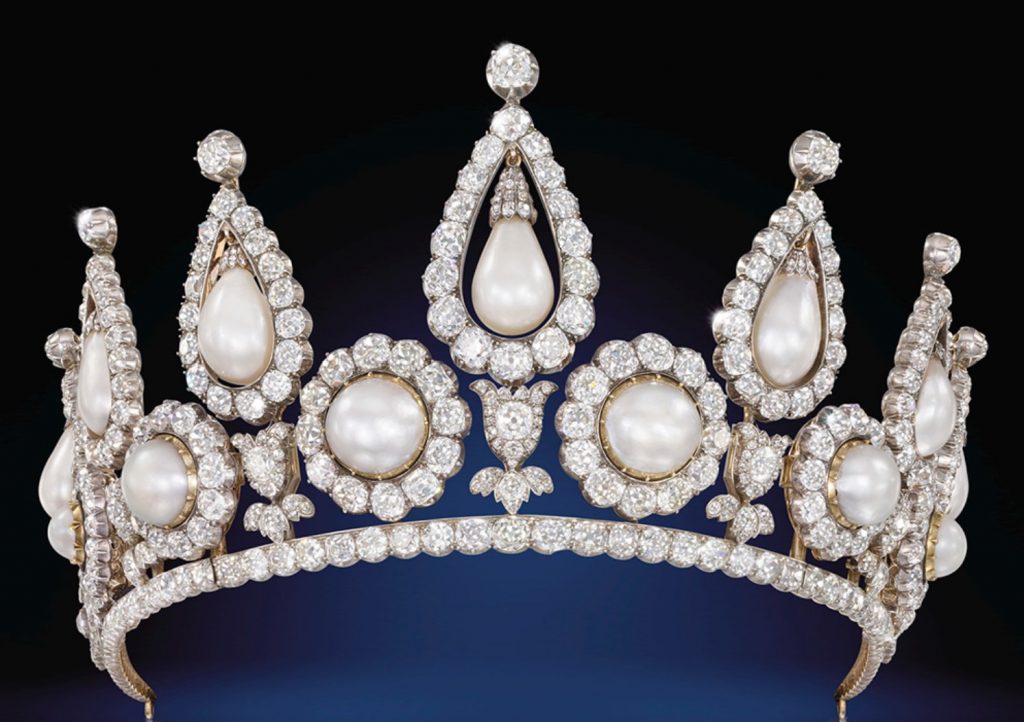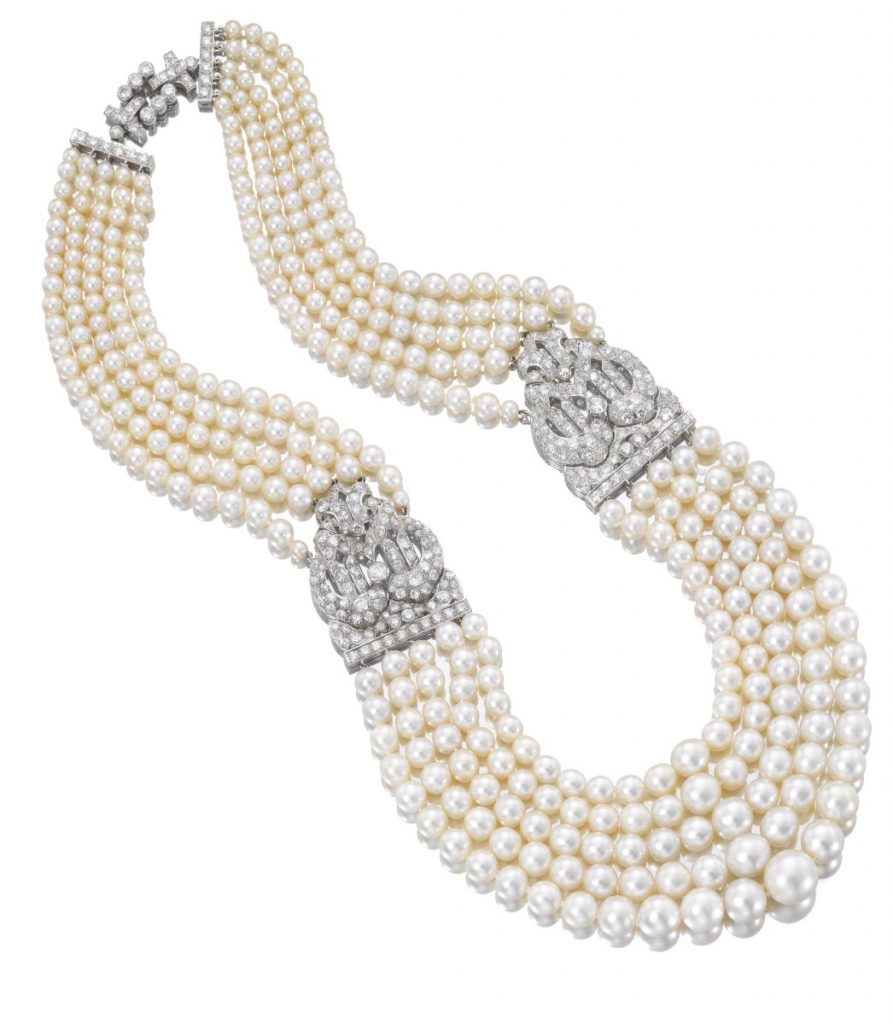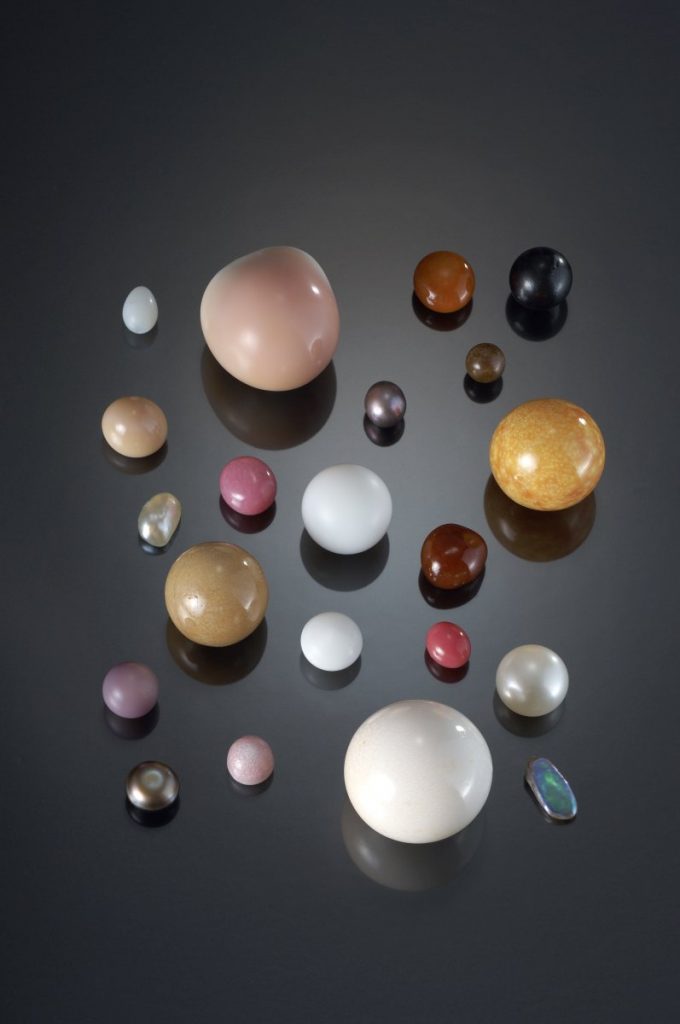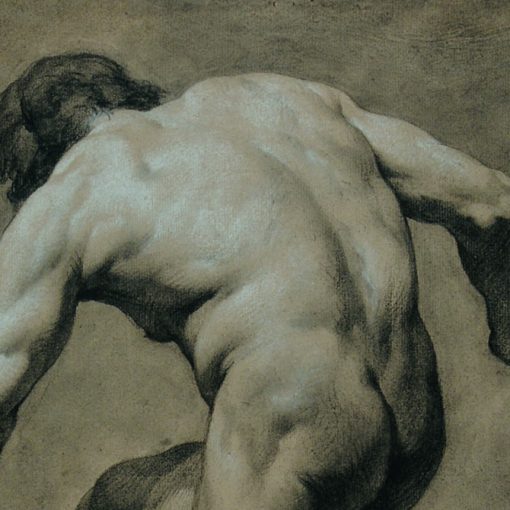Pearls, V&A and Qatar Museums Authority Exhibition, 21 September 2013 – 19 January 2014

Pearls, on exhibition currently at the Victoria and Albert Museum, elegantly reveals the long historical allure of these precious objects. At once dispelling myths about nature’s formation of pearls and demonstrating the skills – and indeed mortal dangers – involved in diving for and trading them, the exhibition presents the sophisticated taste and craftsmanship that has gone into setting and displaying them through a spectacular array of jewellery and clothing dating back to antiquity. Implicitly, the exhibition imparts a lesson in human vanity: appreciated for their rarity and beauty, the value of pearls has been connected with symbolic and religious power but it has also been inextricably bound with extremes of worldly power and wealth.
Indeed, the pearl has arrived at the V&A accompanied by the latter, since the partner for this exhibition is the Qatar Museums Authority (QMA). The QMA’s head, Sheikha Mayassa bint Hamad bin Khalifa Al Thani – the thirty year-old daughter of the Emir of Qatar – has been referred to in the press as the most powerful woman in the art world who controls an enormous budget for investment in art. Although it is not made officially public, the British media has speculated on her annual budget, and this exhibition underscores the grounds of those speculations with some extraordinary items.

From antiquity to the mid-twentieth century, the Arabian Gulf was one of the main sources of pearls with Qatar and Bahrain at the centre of the pearl-diving industry. From there, pearls were traded and sent to Europe and Asia via the Indian Ocean. Pearls have also been found in many other areas, including the Philippines and Burma, the Caribbean and Solomon Islands, Mexico and Peru, North America and New Zealand. But it was only with the emergence of cultured pearls in Japan in the early twentieth century and the spread of modern pearl culture techniques that the precious jewel became affordable to many more consumers, modernising its appeal. By the mid-twentieth century, the pearl-diving trade in the Arabian Gulf had ground to a halt and many natural pearl sources around the world had begun to dry up.
Nevertheless, the decline of pearl diving coincided with the discovery of oil in the Gulf. This has made Qatar one of the richest nations in the world, boasting the third-highest GDP. The QMA holds the world’s largest collection of natural pearls as well as some very valuable pieces of natural pearl jewellery. Qatar’s recent investments in art are turning the small nation into a regional cultural centre, though some of its purchases have caused controversy and have been seen as inflating the art market. Last year, the QMA notoriously paid $250 million for Cézanne’s Card Players, the highest sum ever paid for an artwork. Another recent purchase is the 1930s Cartier five-strand natural pearl necklace with diamond and platinum clusters, bought from Sotheby’s for over £2 million and displayed amid the panoply of other treasures at the current exhibition.

Qatar’s investment drive, which includes education and culture more generally, is explicitly justified as a way of preparing for a post-oil economy. But it may also be seen as part of a wider nation-building project, legitimizing the young gulf nation, which remains an absolute – if enlightened – monarchy during a period of instability and revolutionary upheaval in the Middle East.
Beatriz Chadour-Sampson, curator of the exhibition, understandably avoids discussing the wider political and economic issues, and declined to comment on the effect that such a large budget may be having on the art market and indeed on museums such as the V&A. Her focus is the exhibition itself, and rightly so, since it commands attention on its own terms, whatever the socio-economic context of the international art market and its wealthiest investors.
Pearls happily adheres to classical aesthetic principles by being both pleasurable and instructive. Based on the 2010 and 2012 exhibitions in Doha and Kobe respectively, which focused on the natural history and scientific formation of pearls,Pearls has received the best of V&A treatment by taking a different path. It journeys though the history of pearls, allowing audiences to gawp in wonderment at their sensual beauty in fashion, state costume and jewellery since Roman times, through the Byzantine era, the Middle Ages, Renaissance and beyond, right up to contemporary times, both in Europe and further afield.
Read full article in The London Magazine here

